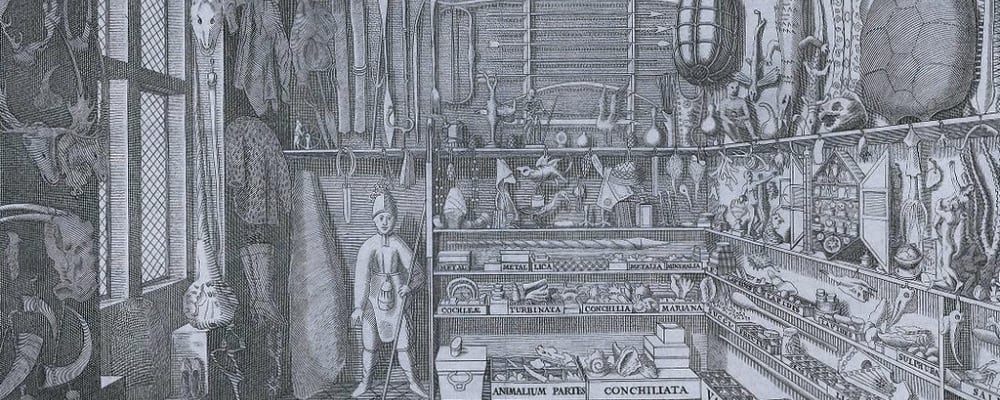As a teacher, I’ve witnessed countless moments where curiosity transforms learning from a task into an adventure. One story particularly stands out. In my Tech Projects class, I had a student who was paralyzed by the blank canvas of possibility. The course begins with complete freedom to choose any technology project, and for this student, that freedom felt overwhelming. Nothing seemed quite right.
Instead of pushing toward a quick decision, I asked them to simply follow their curiosity. “What interests you? What would you like to know more about?” Two weeks of exploration led to a tentative start with a video project, but something still wasn’t clicking. Then came the pivot – they decided to try coding a player-versus-player video game. That spark of curiosity ignited a flame. Soon they were coding outside of class hours, diving deep into game mechanics, and demonstrating remarkable systems thinking. By the end of the semester, they had not only created the start of an impressive game but discovered a passion for coding that might have remained hidden without the space to explore.
The Science of Curiosity
Recent research helps explain why curiosity can be such a powerful force for learning and discovery. A fascinating study from Columbia’s Zuckerman Institute has actually mapped how curiosity manifests in our brains. When we’re curious, specific regions light up – areas connected to both uncertainty and creativity. This isn’t just interesting neuroscience; it helps explain why curiosity can be such a powerful catalyst for learning and innovation.
The implications go even deeper. Research from the University of California, Davis, reported in Edutopia, shows that curiosity doesn’t just help us learn about things we’re interested in – it primes our brains to learn anything better. When we are engaged through curiosity, we’re more likely to remember both the information we are seeking and unrelated details we encounter along the way. It’s as if curiosity creates a learning vortex, pulling in knowledge from all directions.
Curiosity as a Creative Engine
I’ve experienced this magnetic pull in my own creative work, particularly in music. When I work with generative music systems, curiosity drives the entire creative process. It starts with a simple “what if?” – what if I set up these sound triggers in this particular way? You never quite know how the various elements will interact until you try them. Each experiment leads to discoveries that prompt new questions and adjustments. It’s a continuous cycle of curiosity, experimentation, and refinement until something unexpectedly beautiful emerges.
This pattern plays out constantly in my Tech Projects classroom. Students start with a spark of curiosity about how something works, try it out for themselves, and that initial exploration often inspires them to investigate other possibilities. It’s like a curiosity cascade – each discovery opens up new pathways for exploration. The result is always unique because everyone follows their own chain of “what ifs.”
A Problem-Solver’s Mindset
Curiosity isn’t just about sparking new ideas – it’s also a powerful tool for problem-solving. I’ve noticed that my most successful students approach obstacles with curiosity rather than frustration. When something goes wrong (as it inevitably does in technology projects), they ask “What would happen if I tried this instead?” It’s remarkably similar to the scientific method: form a hypothesis, test it out, analyze the results, and use that knowledge to inform the next attempt. Failure is vital feedback, and curiosity is the engine that propels things forward.
Cultivating Curiosity: Practical Strategies
So how can we nurture this powerful force? Here are some approaches that I’ve found to work both in and out of the classroom:
Create a judgment-free zone for ideas. The fastest way to kill curiosity is to label certain thoughts or questions as “bad” or “wrong.”
Personalize your exploration. As the Edutopia research suggests, when learning connects to personal interests, engagement soars. A math problem about generic widgets becomes far more interesting when it involves something you care about.
Embrace the “what if?” mindset. Train yourself to ask questions about the everyday things you encounter. What makes them work? How could they be different?
Give ideas room to breathe. Sometimes the best insights come from letting your mind wander and make unexpected connections.
Document your questions. Keep a curiosity journal or note-taking system. Sometimes the most interesting questions come back around in surprising ways.
Find curiosity companions. Share your interests with others and learn about theirs. Curiosity is contagious, and different perspectives can spark new lines of inquiry.
The Adventure Continues
In her inspiring TED Talk, Yara Shahidi reminds us that the power of curiosity isn’t limited to academics or Silicon Valley innovators. As she says, “it’s […] the daily curiosities of every one of us that holds the most potential for rupture” – for breakthrough, for change, for growth. She points out that many of history’s greatest change-makers weren’t working from specialized institutions – they were people who followed their curiosity beyond their day jobs and into new possibilities.
This resonates deeply with what I’ve seen in my classroom and experienced in my own life. Curiosity isn’t just about acquiring knowledge – it’s about maintaining a sense of wonder and possibility. It’s about seeing connections where others might see barriers, and allowing ourselves to explore beyond the obvious paths.
What are you curious about? What questions are tugging at your attention? Your curiosity isn’t just idle interest – it’s pointing you toward your next adventure, your next discovery, your next creation. The only question is: where will it lead you?
